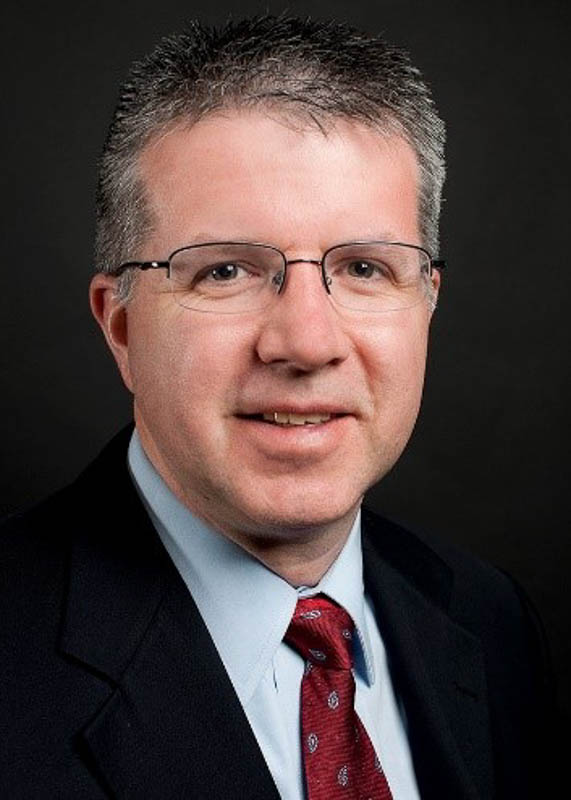Members

Guillermo J. Tearney, MD, PhD, FACC, FCAP, FAIMBE, FOSA
Remondi Family Endowed MGH Research Institute Chair
Professor of Pathology, Harvard Medical School
Massachusetts General Hospital, Department of Pathology
Wellman Center for Photomedicine, Mass General Research Institute
MEC Member: 2017
Email: gtearney@partners.org
Guillermo (Gary) Tearney, MD, PhD, FACC, FCAP, FNAI, is the Remondi Family Endowed MGH Research Institute Chair, Mike and Sue Hazard Family MGH Research Scholar 2012-2017, Professor of Pathology at Harvard Medical School, an Affiliated Faculty member of the Harvard-MIT Division of Health Sciences and Technology (HST) and leads a 70+ person lab at the Wellman Center for Photomedicine at Massachusetts General Hospital.
Dr. Tearney received his MD magna cum laude from Harvard Medical School and received his PhD in Electrical Engineering and Computer Science from the Massachusetts Institute of Technology.
Dr. Tearney leads an extensive team of professionals who conduct research and collaborate across Boston’s Mass General Brigham ecosystem, as well as nationally and internationally, in the following areas: cancer, cardiology/vascular, critical care, dermatology, gastroenterology, otolaryngology, pathology, pediatrics, primary care, pulmonology, radiology and surgery. His specific research interests are focused on the development and clinical validation of non-invasive, high-resolution optical imaging methods for human disease diagnosis.
Dr. Tearney’s lab was the first to perform human imaging in the coronary arteries and gastrointestinal tract in vivo with Optical Coherence Tomography (OCT), which provides cross-sectional images of tissue architectural microstructure at a resolution of 10 μm. He has also conducted many of the seminal studies validating OCT and is considered an expert on OCT image interpretation. Recently, Dr. Tearney’s lab has invented a next generation OCT technology, termed μOCT, which has a resolution of 1 μm and is capable of imaging cells and subcellular structures in the body.
A perennial inventor, Dr. Tearney has developed many other technologies, including a confocal endomicroscope capable of imaging whole organs at the cellular level, swallowable microscopes that traverse and image the entire gastrointestinal tract, the world’s smallest endoscope, a microscope capable of imaging at the nanoscale, and novel spectroscopy and multimodality chemical/molecular imaging techniques.
In 2019 Dr. Tearney’s “gut probe in a pill” was named a Top 10 Breakthrough Technology by Bill Gates in MIT Technology Review.
Dr. Tearney is co-editor of The Handbook of Optical Coherence Tomography and has written over 250 peer-reviewed publications, including papers that have been highlighted on the covers of Science, Nature Medicine, Circulation, Gastroenterology, and Journal of American College of Cardiology. Dr. Tearney also has over 100 granted US patents, resulting in several commercial medical devices. In addition, Dr. Tearney has been a principal investigator on over 40 grants, including NIH R01s from the NCI, NIBIB, NHLBI, and NIDDK. He was recently elected as a fellow of the National Academy of Inventors and named one of the nation’s Top Translational Researchers by Nature Biotechnology.
Dr. Tearney’s work extends beyond his laboratory at MGH, many of his technologies are being produced commercially. He is the vice-chair of the Research Advisory Committee for the Marcus Institute for Aging Research at Hebrew Senior Life, founder and chair of the College of American Pathologists In Vivo Microscopy Committee and now co-Chair of the CAP Digital and Computational Microscopy Committee, and he has founded and chairs the International Working Group on Intravascular OCT Standardization and Validation, a group that is dedicated to establishing standards to ensure the widespread adoption of this imaging technology.
Dr. Tearney also co-leads the Mass General Brigham Center for COVID Innovation (MGBCCI), launched to help coordinate, facilitate, and rapidly develop innovations for the most pressing COVID-19 issues affecting patients, frontline health care workers, and the community.
